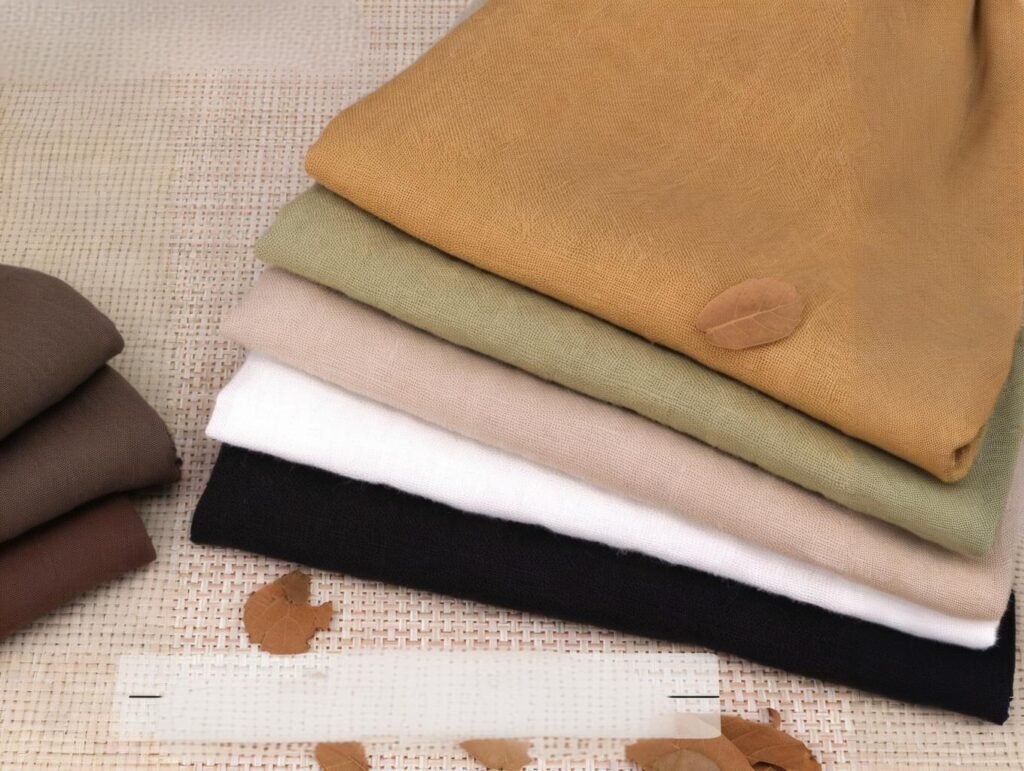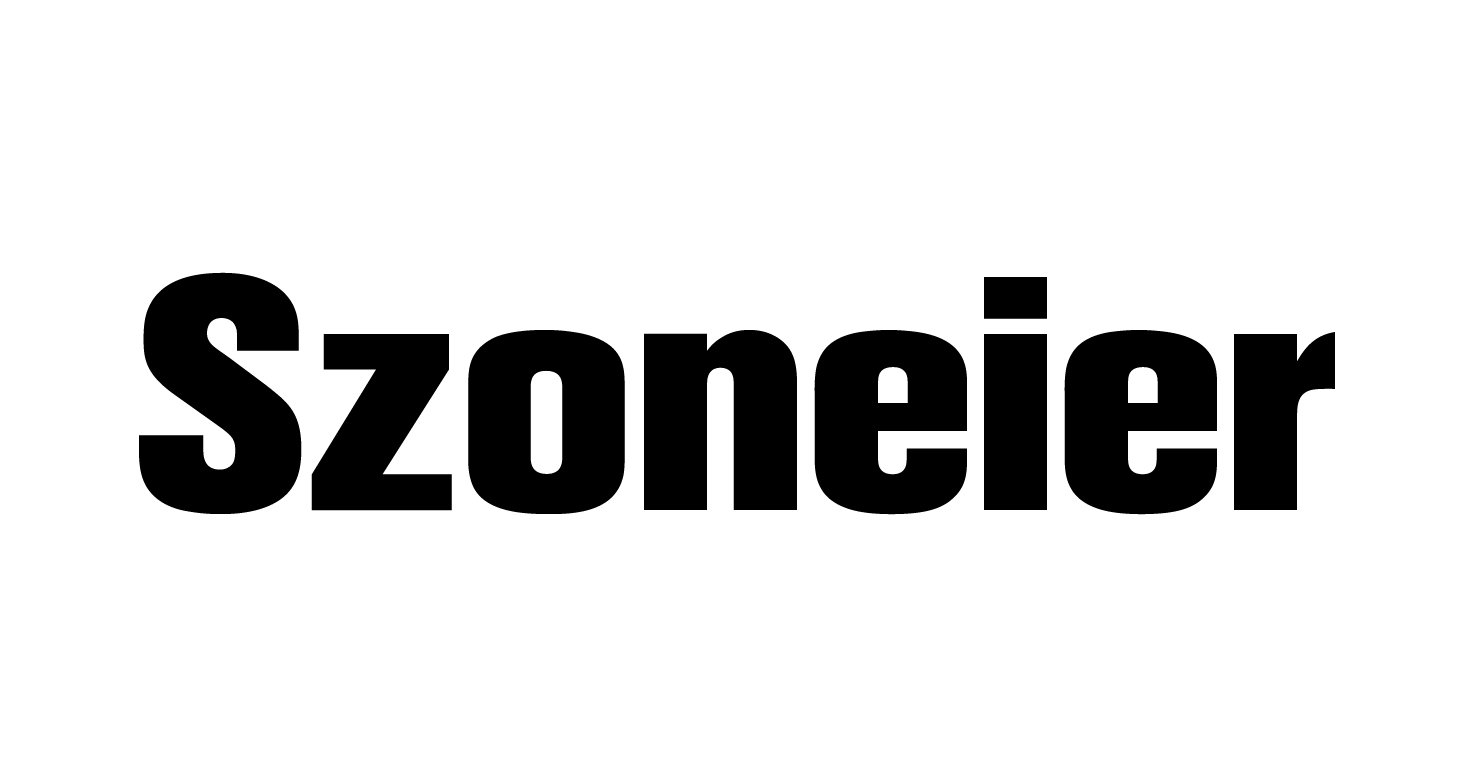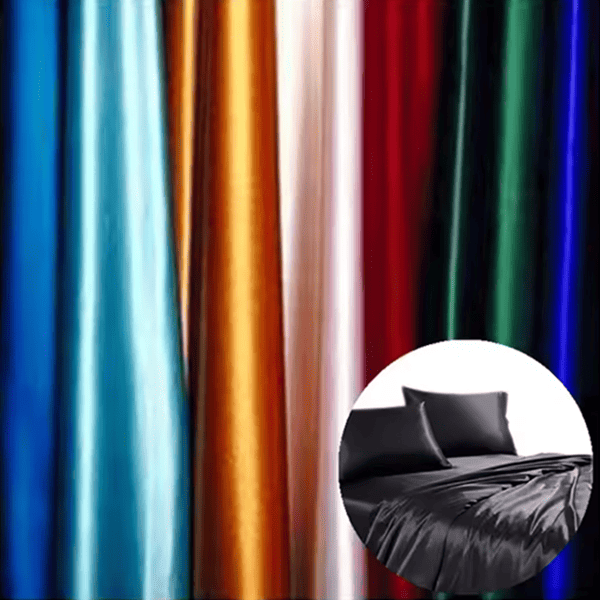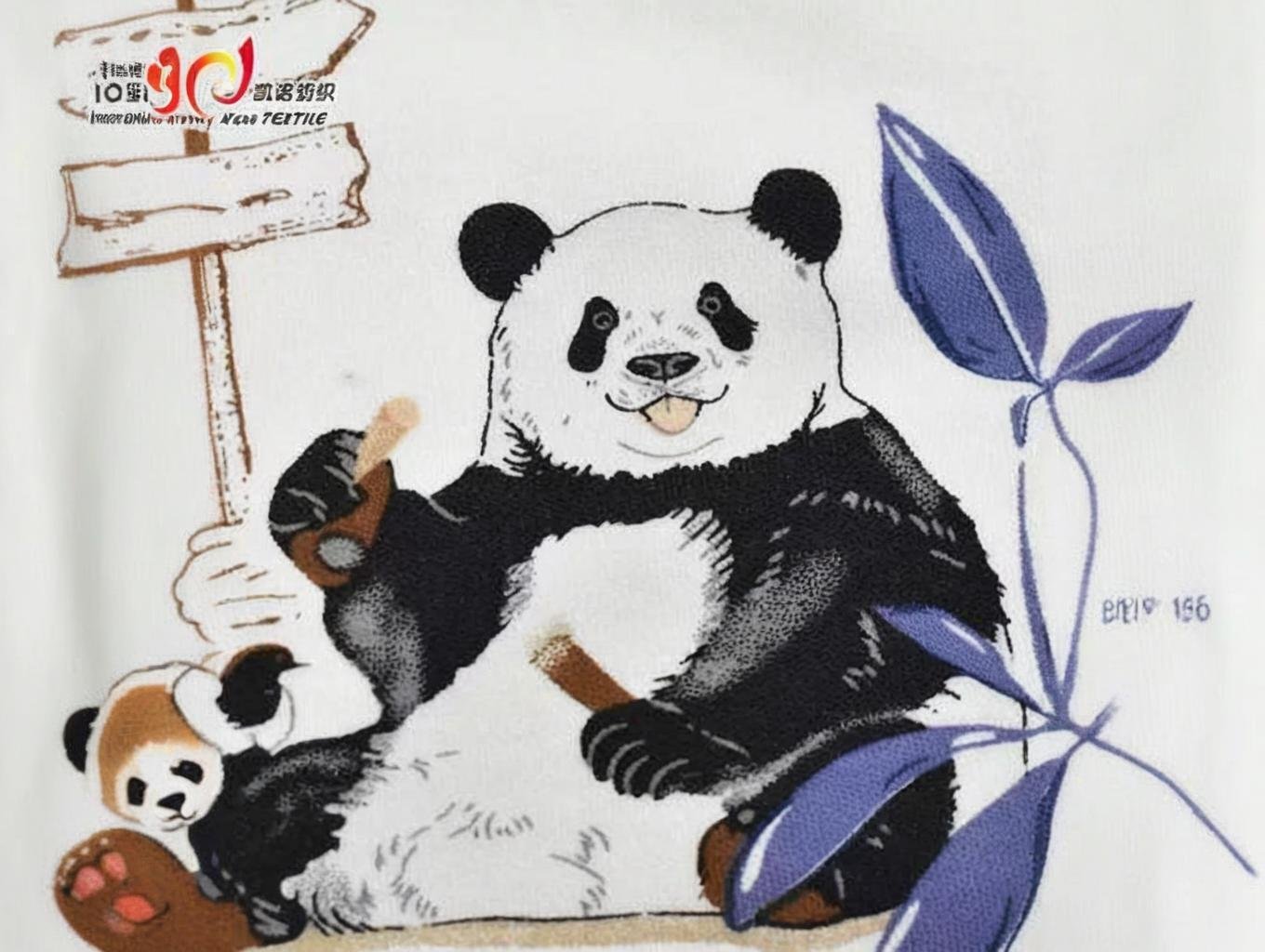Who Is the Biggest Producer of Linen?

In the global fabric supply chain, linen holds a uniquely prestigious position. With its long history, natural sustainability, and high-end appeal, linen is a favorite among fashion houses, eco-conscious brands, and interior designers alike. But as demand grows for traceable, ethically-sourced linen at scale, one question matters more than ever: who controls the world’s linen supply?
China is currently the world’s largest producer of linen by volume, particularly in terms of raw flax processing and affordable linen fabrics. However, Western Europe—especially France, Belgium, and the Netherlands—leads in premium-grade flax cultivation and high-end linen fabric production.
This split in volume vs. quality has made linen sourcing more complex. European countries dominate the upper tiers of the market, while China dominates mass-market production. Choosing the right origin depends on your priorities—price, certification, weave quality, or brand storytelling.
Let’s dive deeper into which countries dominate linen production, how they differ, and what B2B buyers should consider when sourcing.
1. What Countries Dominate Global Linen Production Today?
China, France, Belgium, and the Netherlands are the leading global linen producers. China leads in fabric output, while Europe leads in flax farming and premium-quality weaving.
1.1 Global Linen Production Overview:
| Country | Role in Linen Industry | Strengths |
|---|---|---|
| China | Largest volume producer of linen fabric | Low-cost spinning, dyeing, and exports |
| France | Largest producer of flax fiber | Sustainable farming, long-staple flax |
| Belgium | High-end linen weaving & processing | Heritage brands, refined finishing |
| Netherlands | Flax cultivation hub | Flax seed R\&D, clean harvesting systems |
| India | Growing linen production base | Domestic demand, low labor costs |
| Italy | Premium fashion-grade linen weaving | Dyeing, finishing, design innovation |
1.2 Linen vs. Flax: A Quick Clarification
- Flax = the plant used to create linen
- Linen = the finished fabric made from flax fiber
So while France and Belgium dominate flax agriculture, China processes much of that flax into finished linen for garments, home textiles, and industrial use.
1.3 Market Data Snapshot:
| Metric | China | France | Belgium |
|---|---|---|---|
| Flax Fiber Cultivated (tons/yr) | \~100,000 | \~125,000 | \~75,000 |
| Linen Fabric Output (tons/yr) | \~300,000 | \~40,000 | \~20,000 |
| Export Value (USD, est.) | \$2.1 billion | \$600 million | \$450 million |
1.4 Case Example:
Many high-end European fashion brands (e.g. Chanel, Hermès) source French-grown flax but may have parts of the spinning or weaving done in China before final finishing in Italy or Belgium. This hybrid sourcing maximizes cost efficiency while retaining “European linen” brand value.
2. Which Region in Europe Is Known as the Heart of Linen Manufacturing?
The Normandy and Flanders regions—spanning northern France, Belgium, and parts of the Netherlands—are considered the heart of global linen cultivation and processing, especially for premium-grade flax fiber.
2.1 The “Golden Triangle” of European Linen:
| Region | Country | Role in Linen Industry |
|---|---|---|
| Normandy | France | Largest flax cultivation zone |
| Flanders | Belgium/NL | Historic linen weaving + scutching processes |
| Seine-Maritime, Calvados | France | Family-run flax farms, GOTS-certified producers |
2.2 Why This Region Excels:
- Climate Advantage: Cool, moist climate ideal for slow flax growth
- Soil Profile: Rich loamy soil ensures long-staple flax fibers
- Generational Expertise: Many family farms and weavers with 100+ years of experience
- Technology and Traceability: Digital flax tracking, clean retting systems, and low-chemical inputs
2.3 EU Certifications That Add Value:
| Label | Description |
|---|---|
| Masters of Linen® | 100% European-grown, spun, and woven linen |
| CELC (Confédération Européenne du Lin et du Chanvre) | Oversees European flax promotion and certification |
| OEKO-TEX® / GOTS | Ensures environmental and labor compliance |
2.4 Real Supplier Example:
A Dutch-based textile brand sources all of its high-thread-count linen from Libeco (Belgium), one of Europe’s last vertically integrated linen mills. Their linen is certified carbon neutral, 100% EU-origin, and carries the Masters of Linen® label—allowing the brand to market true “slow-grown European linen” to premium consumers.
3. How Much Linen Does China Produce Compared to Europe?
China produces significantly more linen fabric by volume than any other country, but most of the flax used is imported from Europe. Europe—especially France and Belgium—grows the majority of the world’s flax but processes less of it locally.
3.1 Production Breakdown: Volume vs. Origin
| Country | Annual Linen Fabric Output (est. tons) | % of Global Output | Major Input Source |
|---|---|---|---|
| China | \~300,000 | \~75% | European flax imports |
| France | \~40,000 | \~10% | Locally grown flax |
| Belgium | \~20,000 | \~5% | Locally grown flax |
| India | \~15,000 | \~4% | Mixed sources |
| Italy | \~8,000 | \~2% | European and Chinese flax |
China dominates low- to mid-tier linen production, servicing global demand for affordable linen apparel, home textiles, and mass-market goods.
3.2 Why China Leads in Volume:
- Infrastructure: Massive weaving and dyeing capacity in provinces like Shandong and Jiangsu
- Labor Cost: Significantly lower than Western Europe
- Scalability: Suitable for orders from fast-fashion and mass retailers
- Export Network: Strong links to U.S., EU, and Southeast Asia buyers
3.3 Flax Import Dependency:
Although China grows some domestic flax (primarily in Heilongjiang), the highest-quality long-staple flax still comes from Europe. As much as 70% of China’s linen production uses imported French or Belgian flax, especially for higher-end orders.
3.4 Buyer Insight:
If you’re looking for:
- Price-sensitive linen → China is the top choice for scalability and affordability
- Fully traceable, EU-origin linen → Europe remains unmatched in flax fiber purity and sustainability standards
4. Is Belgium Still a Leader in Premium Linen Fabric Production?
Yes, Belgium remains one of the world’s most respected producers of premium linen, particularly known for fine weaving, eco-processing, and heritage craftsmanship under strict European sustainability and quality regulations.
4.1 Belgium’s Niche: High-End Linen Weaving
| Feature | Why It Matters |
|---|---|
| Long-staple fiber processing | Results in smoother, stronger yarn |
| Heritage weaving | Multi-generational skill, slow-production |
| Environmental compliance | Minimal chemicals, water recycling |
| Certifications | Masters of Linen®, OEKO-TEX®, GOTS |
4.2 Flagship Belgian Linen Brands:
| Brand | Specialty Use |
|---|---|
| Libeco | Luxury apparel & home (certified carbon-neutral) |
| Verilin | Custom hospitality linen (woven in Belgium) |
| Deltracon | Interior upholstery, large-width fine linens |
4.3 What Makes Belgian Linen Stand Out?
- Hand-feel: Softer and more refined than typical Chinese linen
- Dye Uniformity: European dyeing processes create richer, longer-lasting colors
- Shrink Control: Preshrunk finishes for apparel and high-end bedding
- Sustainability: Belgian flax is grown with zero irrigation and minimal pesticide use
4.4 Real-World Benchmark:
| Parameter | Belgian Linen | Mid-Tier Chinese Linen |
|---|---|---|
| Thread Count (warp × weft) | 56 × 44 (fine) | 40 × 36 (medium) |
| Shrinkage after 3 washes | \~2% | 5–8% |
| Colorfastness (ISO 105-B02) | 6/7 | 4/5 |
| Price per meter (FOB) | \$12–\$30+ | \$3–\$8 |
4.5 Brand Perception:
Using “Belgian Linen” or “Made in Belgium” in marketing carries strong storytelling weight—especially for luxury, slow fashion, and sustainable home brands in Europe, Japan, and the U.S.
5. What Role Does France Play in the Global Linen Supply Chain?
France is the largest producer of flax fiber in the world, responsible for over 70% of global premium-quality flax cultivation. This raw material feeds both European luxury weaving mills and mass-market Chinese linen manufacturers.
5.1 Why France Leads in Flax Farming:
| Factor | Impact on Linen Quality |
|---|---|
| Temperate Maritime Climate | Slower flax growth → longer fibers |
| High Humidity in Normandy | Supports natural retting without chemicals |
| Soil Quality (loamy) | Promotes uniform flax stalks |
| Sustainable Practices | Over 80% of French flax requires no irrigation and minimal pesticides |
5.2 French Flax Output (Annual Estimate):
| Metric | Volume |
|---|---|
| Flax Grown (hectares) | \~120,000 ha |
| Flax Fiber (tons/year) | \~130,000 |
| Exported Raw Flax (mainly to China) | \~100,000+ |
5.3 French Flax Value Chain:
- Growers: Small family farms in Normandy, Hauts-de-France
- Scutching/Combing: Done locally or in Belgium
- Spinning: Often in Eastern Europe or Asia
- Weaving & Finishing: In France (e.g., Emmanuel Lang), Belgium, or Italy
5.4 France as a Global Hub:
Despite relatively lower linen fabric production, France is the foundation of the entire supply chain. Most “Made in China” linen garments still trace their origin back to French flax, which adds value in transparency and storytelling.
5.5 Marketing Insight:
B2B buyers sourcing from Chinese mills can request flax certificates of origin proving that their fabric was made from French-grown raw material—a valuable claim for European, Japanese, and North American retail markets.
6. How Does Flax Cultivation Affect a Country’s Linen Output?
A country’s climate, soil, agricultural practices, and retting processes directly influence the length, fineness, and strength of the flax fiber—determining both the quantity and quality of its linen output.
6.1 Key Factors in Flax Cultivation Success:
| Factor | Description | Impact on Linen Quality |
|---|---|---|
| Climate | Cool, damp, with limited temperature extremes | Supports long-staple growth |
| Soil | Well-drained, loamy soils rich in organic matter | Promotes uniform stalks |
| Harvest Timing | Precise timing critical to avoid fiber damage | Affects fiber fineness |
| Retting Method | Natural field retting preferred over chemical | Less fiber degradation |
6.2 Global Flax Cultivation Comparison:
| Country | Flax Quality | Primary Use |
|---|---|---|
| France | Very High | Premium fashion, home textiles |
| Belgium | Very High | Luxury weaving, legacy brands |
| Netherlands | High | Fiber R\&D, mixed-use processing |
| China | Moderate | Budget linen production |
| Russia | Moderate–Low | Mostly industrial use |
| Canada | Low (mainly seed) | Oilseed flax, not textile grade |
6.3 Environmental Benefits of Flax:
- Requires no irrigation
- Grows in 100 days
- Absorbs more CO₂ than it emits
- Zero-waste crop (residue used in paper, insulation, bioplastics)
6.4 Case Study:
A U.S.-based sustainable bedding brand switched from 100% cotton sheets to 100% European flax linen using raw fiber sourced from Normandy. Despite a 35% increase in fabric cost, their campaign “From French Soil to Your Bed” led to:
- 62% higher engagement on product pages
- 2.1x conversion uplift
- Press features in Vogue Living and Architectural Digest
6.5 Strategic Takeaway:
B2B buyers seeking transparent, eco-certified linen should focus on the flax source—not just where the fabric is woven. Flax origin is a measurable marker of sustainability, durability, and product premiumization.
7. Are There Differences in Quality Between Chinese and European Linen?
Yes, there are noticeable differences in quality between Chinese and European linen—primarily in terms of fiber length, fabric hand-feel, dyeing consistency, and sustainability standards. European linen is typically considered higher-end, while Chinese linen dominates budget-friendly and high-volume applications.
7.1 Key Differences at a Glance:
| Attribute | European Linen | Chinese Linen |
|---|---|---|
| Fiber Source | Long-staple flax (France, Belgium) | Mix of domestic flax + imported EU flax |
| Texture | Softer, smoother, refined | Coarser, less uniform |
| Dye Uniformity | High colorfastness, premium finishes | May vary between lots |
| Shrinkage Rate (washed) | Low (\~2–3%) | Moderate (\~5–8%) |
| Certification Standards | Masters of Linen®, GOTS, OEKO-TEX® | Limited to factory-level audits |
| Price Range (FOB) | \$12–\$30+/m | \$3–\$10/m |
7.2 Quality Segments:
- Chinese linen is often best for:
- Budget apparel
- Entry-level bedding
- Promotional totes
- European linen is ideal for:
- Designer fashion
- Luxury home textiles
- Hospitality-grade table linens
7.3 Buyer Strategy:
Brands that use Chinese-woven linen made from European-grown flax often combine the best of both worlds—balancing traceability and price. This dual-origin setup allows for marketing transparency while staying competitive.
7.4 Visual & Sensory Differences (Side-by-Side):
| Test Category | European Linen Sample | Chinese Linen Sample |
|---|---|---|
| Light Reflection | Matte, smooth | Slightly uneven sheen |
| Touch | Soft with dry hand | Slightly stiffer, crisp |
| Weave Uniformity | Consistent throughout | Minor flaws, occasional slubs |
8. What Should B2B Buyers Consider When Choosing a Linen Supplier by Country?
When choosing a linen supplier, B2B buyers should weigh cost, fiber origin, fabric finishing, compliance certifications, delivery lead time, and brand alignment. The supplier’s country often signals the balance between volume capability and quality expectations.
8.1 Key Decision Factors:
| Factor | What to Evaluate | Best Fit For |
|---|---|---|
| Fiber Origin | Ask for country of flax cultivation | Sustainability storytelling |
| Spinning & Weaving | Review process quality and tolerances | Technical consistency |
| Certifications | OEKO-TEX®, GOTS, Masters of Linen® | Premium eco-labeled products |
| MOQ & Pricing | Low MOQ for sampling or pilot batches | Startups or seasonal drops |
| Production Lead Time | Varies by region (China = faster) | High-volume brands |
| Sustainability Claim | Can supplier trace flax back to field? | Luxury and conscious markets |
8.2 Supplier by Country: Sourcing Strategy Matrix
| Country | Strengths | Ideal For |
|---|---|---|
| China | Cost-effective, scalable, wide variety | Mass-market retail, budget-focused brands |
| France | Best raw flax, transparent traceability | Premium home, eco-focused labels |
| Belgium | High-quality weaving, heritage branding | Luxury fashion and lifestyle products |
| India | Low labor costs, good dye houses | Fast fashion and private labels |
| Italy | Fine finishes, fashion-forward blends | High-end fashion, boutique designers |
8.3 Real-World Insight:
A U.S. DTC fashion brand tested two fabric options:
- Option A: 320 GSM linen from a Belgian mill at \$22/meter (FOB Antwerp)
- Option B: 320 GSM linen from China made with imported French flax at \$9.80/meter (FOB Ningbo)
They selected Option B for their mainline SKUs and Option A for a limited-edition luxury capsule. This hybrid strategy helped maintain margins while appealing to premium-conscious customers.
Know Your Linen’s Roots Before You Source
The global linen supply chain is both complex and full of opportunity. While China leads in volume, France and Belgium dominate in quality and flax origin. For B2B buyers, the ideal source depends on how much you value fiber pedigree, cost savings, sustainability claims, and end-user expectations.
Ready to Source Custom Linen for Your Brand?
SzoneierFabrics has helped hundreds of international buyers navigate the linen sourcing landscape with:
- ✅ 100% quality-guaranteed linen fabric options
- ✅ Custom GSM, dyeing, and finishing services
- ✅ Chinese-woven and EU-origin options (French flax available)
- ✅ Free design support, fast sampling, and low MOQ flexibility
Let’s talk about your linen project. Reach out now for samples, tech packs, and fabric consultation.
Can't find the answers?
No worries, please contact us and we will answer all the questions you have during the whole process of bag customization.
Make A Sample First?
If you have your own artwork, logo design files, or just an idea,please provide details about your project requirements, including preferred fabric, color, and customization options,we’re excited to assist you in bringing your bespoke bag designs to life through our sample production process.



